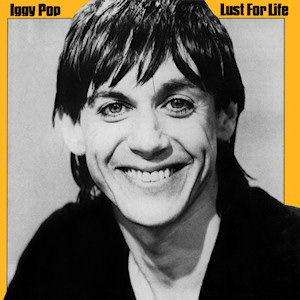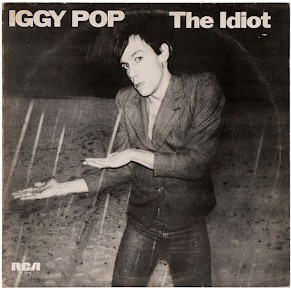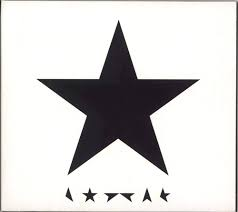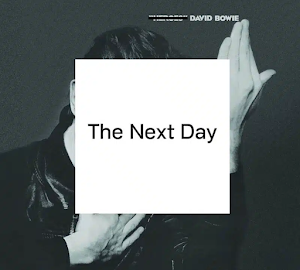Joe Blevins's Blog, page 2
October 8, 2025
Ed Wood Wednesdays, week 245: The Erotic World of A.C. Stephen (1999) [PART 3]
 Director Steve Apostolof poses with actress Rene Bond, who starred in several of his movies.
Director Steve Apostolof poses with actress Rene Bond, who starred in several of his movies.It's taken me a while, I realize, but it's finally time to wrap up my look at the 1999 Something Weird compilation tape, The Erotic World of A.C. Stephen, gifted to me by reader Brendon Sibley. What can I say? There was just too much material in The Erotic World to cover in a single article. Or two articles. I spent five years working on a book about Stephen C. Apostolof, and there were things on this tape even I hadn't seen in my research.
var infolinks_pid = 3415273; var infolinks_wsid = 0;
Published on October 08, 2025 03:00
October 1, 2025
Ed Wood Wednesdays, week 244: The Erotic World of A.C. Stephen (1999) [PART 2]
 Steve Apostolof looks over a script, probably an erotic one.
Steve Apostolof looks over a script, probably an erotic one.So where were we?
Two weeks ago, I started discussing Something Weird Video's The Erotic World of A.C. Stephen (1999), a compilation of clips from the films of softcore director and frequent Ed Wood collaborator Stephen C. Apostolof (1928-2005). Reader Brendon Sibley sent me a copy of this rare tape, and I was happily making my way through its contents. When we left off, I was talking about Bachelor's Dream (1967), a very obscure short film that began life as some black-and-white test footage that was shot for Orgy of the Dead (1965).
But that was just the opening act! The Erotic World has so much more to offer. After Bachelor's Dream ends, we see some trailers for Steve's non-Ed Wood films: Office Love-In (1968), Motel Confidential (1969), Suburbia Confidential (1966), and College Girls (1968). These were nudity-filled, black-and-white exploitation flicks from Steve's "confidential" phase, when he was busy exposing the seamy side of average, everyday American life. Several of these films featuring Steve's most-frequent leading man, Harvey Shain (aka Forman Shane), and his most-frequent leading lady, Marsha Jordan.
var infolinks_pid = 3415273; var infolinks_wsid = 0;
Published on October 01, 2025 03:00
September 30, 2025
Podcast Tuesday: "Julia Roberts in Love is Nice"
 Not Pretty Woman 2 but an incredible simulation.
Not Pretty Woman 2 but an incredible simulation.Director Garry Marshall had the biggest hit of his life with the romantic comedy Pretty Woman (1990), but he didn't spend the next few years trying to copy it. His follow-up film, Frankie and Johnny (1992), was an adaptation of a Terrence McNally play, and he only slightly watered it down and gussied it up for Hollywood. It did acceptably. But then came what I think of as Garry's Trilogy of Terror: three back-to-back critical and box office disasters that should have had him seriously rethinking his career. Ignored by audiences and reviled by the press, Exit to Eden (1994), Dear God (1996), and The Other Sister (1999) were all major miscalculations on Garry's part.
Did Garry Marshall start to have self-doubts? Maybe, because he then reteamed with Pretty Woman stars Julia Roberts and Richard Gere for Runaway Bride , a romantic comedy expressly designed to remind people of the previous film. The script had been bouncing around Hollywood for years, with various stars attached to it. But the version that got made was the movie we're reviewing this week on These Days Are Ours: A Happy Days Podcast . To hear what we thought of it, go ahead and push the play button on the podcast below.
var infolinks_pid = 3415273; var infolinks_wsid = 0;
Published on September 30, 2025 07:09
My Month of Bowie: A bluffer's guide to the Thin White Duke
 The many haircuts of David Robert Jones (1947-2016).
The many haircuts of David Robert Jones (1947-2016).In September 2025, I decided to write a series of articles about British rock legend David Bowie. Why? Well, I figured I'd been ignoring his music for too long, and it was high time I changed that. But I couldn't possibly listen to everything he ever recorded. So I decided to make a speed-run through just his official studio albums, reviewing one a day for the entire month. Below, you'll find a list of the articles I wrote during that time. var infolinks_pid = 3415273; var infolinks_wsid = 0;
Published on September 30, 2025 07:06
My Month of Bowie, day 30: 'Toy' (2021)
 Being dead didn't stop David Bowie from releasing one more studio album.
Being dead didn't stop David Bowie from releasing one more studio album.The album: Toy (ISO, 2021)
 The baby who sold the world.
The baby who sold the world.My thoughts: Until now, I have stubbornly resisted talking about Toy, an album David Bowie recorded in 2000 that was shelved by his label and remained unreleased until 2021, six years after the singer's death. For one thing, a posthumously-released LP seems to fall into the dreaded "apocrypha and miscellanea" category that I pledged to avoid at the beginning of the month. (Not part of the canon? Not interested.) Secondly, I knew that Toy mostly consisted of remakes of songs David Bowie had originally written in the 1960s. Unless we're talking about last night's pizza, leftovers aren't usually too appetizing to me.
But I changed my mind for a couple of reasons. First, when I wrote my defense of Bowie's under-loved Pin Ups (1973) album, I said that people should forget it was a collection of covers and just try to experience it as a half-hour of great rock music. So for me to dismiss Toy, which is Bowie covering himself, would be hypocritical. Second, and even more important, I listened to the first few tracks on Toy and enjoyed them enough to want to keep listening to the LP. So I guess we're doing this.
Most of these tracks are from early singles recorded before David's 1967 debut LP, which means that they're entirely unfamiliar to me. Or new, you might say. (Remember that NBC slogan from the '90s? "If you haven't seen it, it's new to you." Hard to argue with that.) Honestly, based on its sound and knowing nothing of its origin, I would have thought Toy to be just another early 2000s Bowie album. Even though it was produced by Mark Plati, who worked with David on Earthling (1997), it takes a lot from the Tony Visconti playbook. This is a very sonically-satisfying, richly-produced album that shows off Bowie's voice to best advantage.
I think it's significant that, when he was in his 50s, David Bowie revisited the songs he wrote when he was a much younger man—a mere lad, really. It's like finding a journal you kept when you were a kid and thinking, "Was that really me? Did I ever really think that way?" Bowie (in great voice, incidentally) brings some gravitas to these tunes that they might have lacked when they were sung by a teenager. Take the song "Baby Loves That Way" as an example. Being in a toxic relationship when you're 18 is very different from being in one when you're 54. And then there's "London Boys," which sounds like the older Bowie is gently lecturing his younger self about the follies of trying to be cool to impress your peers.
If there's a standout track on Toy for me, it's "You've Got a Habit of Leaving," originally a single Bowie released in 1965 when he was still Davy Jones. It's another toxic relationship song, so I'm guessing Bowie's personal life was already complicated in the '60s. To me, the remake could have been a hit in 2021 with its stark refrain: "Sometimes I cry/Sometimes I'm so sad." I was so taken with the Toy track that I listened to the original from '65 and found a charming but disposable Merseybeat bop. Maybe the reason why Bowie dug these songs up in 2000 is that he felt he could do them justice the second time around. He'd sure spent a lot more time in recording studios by then.
And that, I suppose, brings us to the end of My Month of Bowie. Thirty days hath September. But I don't think this is the end of my David Bowie journey by any means. What I wanted out of this project was a basic roadmap of David's career. And I got that. But I got more. A lot more. Who knows? Maybe some additional Bowie content will make its way onto this blog. God knows, there's plenty more to cover. I think I've reviewed about 5% of the man's total discography. So much territory to explore. Let's reconvene in September 2026.
P.S. Before I go, I want to share this clip of David Bowie on The Tonight Show Starring Johnny Carson. He performs "Life on Mars?" and "Ashes to Ashes." Isn't this neat? Thank you, algorithm, for bringing this to me.
var infolinks_pid = 3415273; var infolinks_wsid = 0;
Published on September 30, 2025 03:00
September 29, 2025
My Month of Bowie, day 29: Iggy Pop's 'Lust for Life' (1977)
 What, him worry? Iggy Pop lusted for life in 1977.
What, him worry? Iggy Pop lusted for life in 1977.The album: Lust for Life (RCA, 1977)
 Smile for the birdie, Iggy!
Smile for the birdie, Iggy!
My thoughts: I distinctly remember learning that singer Dean Martin and comedian Jerry Lewis had once been a very successful duo in the 1950s. This was very confusing to me as a kid. The tan, tuxedoed guy who sang "That's Amore" and the twitchy, adenoidal comedian from the annual Labor Day telethon? How would that possibly work? And yet... somehow... it's true. There they are on TCM, yukking it up in hit films like The Caddy (1953) and The Stooge (1951). They were rock stars before rock stars existed, and their 1956 breakup was as bitter and well-publicized as that of The Beatles. In the minds of an entire generation, these two very different men—crooner and clown—are eternally linked.
You've probably already guessed that I'm using Martin and Lewis as a metaphor to describe the equally unlikely pairing of David Bowie and Iggy Pop in the late 1970s, with David as Dean and Iggy as Jerry. Only this pairing did not end in a contentious divorce. In fact, Iggy has been quite gracious over the years in acknowledging that Bowie not only resurrected his career but saved his life when the two moved to Europe and started writing and recording together while they kicked their respective drug habits. This fertile period led to three albums for Bowie and two more for Pop, all considered classics to one extent or another.
Iggy's second solo LP Lust for Life came out just half a year after The Idiot but does not follow the template of that record, at least musically. Experimentation and change were the keynotes of that era, so it would not have interested Bowie or Pop to imitate an album they'd just done. While The Idiot has been called an honorary Bowie album, since David's control over it was so great, Lust for Life sounds like Iggy Pop forging the identity he would use for his decades-long solo career. And what is that identity? Put simply, Iggy Pop is the man who's been through it all so you don't have to. He's done enough drinking, drugging, and screwing for any ten people. Lust for Life is the sound of a man who's been in his share of fistfights and hasn't necessarily won all of them.
This album contains two of Iggy Pop's most justly-famous songs, the thundering title track (written with Bowie) and the haunting "The Passenger," and it's instructive to hear these familiar tunes in their original context. It reenergizes them. "Lust for Life" has been used in so many TV shows, movies, and commercials that we've forgotten or ignored the song's harrowing, William S. Burroughs-inspired lyrics about the junkie life. Which reminds me: there's an entire episode of This American Life about Burroughs from 2015, narrated by Iggy Pop. If you're still reading this article, you'll want to hear it. Naturally, the title track from this very album is a key part of that episode.
Lust for Life also contains a couple of songs that Bowie later revisited in 1984: "Tonight" and "Neighborhood Threat." In both cases, I'd have recommended leaving well enough alone, especially with "Tonight." Even though David's solo rendition adds a guest vocal by the always-welcome Tina Turner, the song loses almost all of the punch and immediacy it had in 1977. After hearing this Iggy Pop album, I'm starting to understand what people meant when they said David's creativity was running low in the '80s. Why take songs you'd already nailed and remake them unless you have something really vital to add to them?
I said earlier that Lust for Life departs from the template established by The Idiot. Which, musically speaking, is true. Lust ditches the Kraftwerk-inspired sound of the previous record in favor of scrappy, Nuggets-style garage rock. Lyrically, though, I think Iggy Pop was working through a lot of the same issues on this LP as he was on the earlier one. Namely, Iggy is a man who's been at the banquet of life too long and has seen the underside of the table where all the chewed-up gum has solidified. You hear that theme coming through on tracks like "Some Weird Sin" and "Success." Sex, drugs, and rock & roll ought to come with a warning label, telling you they're contraindicated for anyone who wants to live to see retirement age.
P.S. I noticed that brothers Hunt and Tony Sales, sons of comedian Soupy Sales, worked on this album as musicians and songwriters on the closing track, "Fall in Love with Me." The Sales brothers would later join Bowie in Tin Machine about a decade later. Is this where the Tin Machine saga begins? I may have to check out that band after all.
Next: Toy (2021) var infolinks_pid = 3415273; var infolinks_wsid = 0;
Published on September 29, 2025 03:00
September 28, 2025
My Month of Bowie, day 28: Iggy Pop's 'The Idiot' (1977)
 David Bowie made some weird friends along the way. Iggy Pop was one of them.
David Bowie made some weird friends along the way. Iggy Pop was one of them.The album: The Idiot (RCA, 1977)
 Everybody do the Iggy!
Everybody do the Iggy!
My thoughts: Hooked on drugs and losing what was left of his brilliant mind, David Bowie decamped to Europe in the late 1970s. His life in Los Angeles had gotten too out-of-control even for an androgynous alien rock star. Luckily for us, he took a boisterous traveling companion with him: ex-Stooges frontman and garage rock icon Iggy Pop. Bowie made his famed Berlin trilogy during this very productive era (1977-1979), drawing musical influence from such experimental German bands as Kraftwerk and collaborating with the always-enigmatic Brian Eno. But even while crafting three of his boldest and best-regarded LPs, Bowie still had time to serve as a producer, songwriter, vocalist, and multi-instrumentalist on Iggy Pop's first two solo albums.
Simultaneously goofy and menacing, Iggy Pop is such a major character in rock history—I think of him as the Bugs Bunny of proto-punk—that it's difficult to imagine there was ever a time when his solo career was brand new. But that's how it was in 1977. The Stooges were on a 30-year break, and Iggy needed to do something with himself to bridge that gap. The result was his debut record, The Idiot. David Bowie's influence on this LP is so great that some critics and fans feel The Idiot belongs to Bowie more than it belongs to Iggy. So it definitely qualifies for this project.
To me, The Idiot sounds like David Bowie and Iggy Pop sequestered themselves in an underground bunker somewhere and tried to figure out what music was, based only on their vague memories of it, while they lived on K-rations. Most of the songs on this album lock into a repetitive, thudding groove and stay there for several minutes while Iggy sings the same note over and over. Imagine an ornery robot trudging through a river of mud. Occasionally, David or Iggy will recall something of life on the surface world. To my ears, for instance, "Sister Midnight," has a lot in common with Stevie Wonder's "Superstition" (1972). And the intro to "Baby" is reminiscent of "Happy Together" (1967) by The Turtles. Just listen to it and think: "Imagine me and you, I do..."
I don't really buy that this is more of a David Bowie album than an Iggy Pop album because the central unifying sound of The Idiot is Iggy's deep, groggy voice. He's very much front and center. At various times he reminded me of Jim Morrison, Eric Burdon, and somebody's dad singing in the shower. There are even times when he sounds a lot like Bowie. (Bowie does contribute some backing vocals.) I wonder if David and Iggy were trying to Single White Female (1992) each other back then.
Lyrically, The Idiot is largely about jaded people who spend their nights partying, clubbing, carousing, drinking, and drugging into the wee small hours. It's fun at first, but it soon becomes empty and ultimately miserable. Iggy Pop sounds like a man who signed a contract with Satan centuries ago and has been mired in an endless loop of debauchery ever since. Did you ever see "A Nice Place to Visit," a 1960 episode of The Twilight Zone with Larry Blyden and Sebastian Cabot? It's about a small-time hoodlum who dies and goes to hell, only he doesn't realize it's hell right away because it sure seems like a gangster's paradise when he arrives. The Idiot reminded me of that.
P.S. Before I go, I should point out that this album contains the original version of "China Girl," which David Bowie famously rerecorded for Let's Dance (1983). I'm so accustomed to the Bowie version that the original somehow seems like a cover. But Iggy Pop's low-fi rendition is worth hearing on its own. Iggy sounds like his vocals were recorded on a Dictaphone, and there's this strange clattering sound that I think comes from a toy piano. "China Girl" is also noticeably faster than most of the other tracks on this album. In fact, The Idiot ends with three (!) consecutive dirges ("Dum Dum Boys," "Tiny Girls," and "Mass Production"), two of which break the seven-minute mark.
Next: Lust for Life (1977) var infolinks_pid = 3415273; var infolinks_wsid = 0;
Published on September 28, 2025 03:00
September 27, 2025
My Month of Bowie, day 27: So what did I learn from all this?
 This month, David took me from crayons to perfume and then back to crayons again.
This month, David took me from crayons to perfume and then back to crayons again.I've had a lot of jobs over the years: middle school Spanish teacher, customer service representative, freelance writer, etc., etc. Some of these I've liked better than others, but they all eventually ended for one reason or another. I've quit a few of them and have been fired or laid off from a few more. One thing they all had in common, though, is that I didn't really understand them until they were over. Every time I've walked away from a job (or been kicked out of one), I've thought, "If I were just starting now, I'd know better what to do."
 Does this thing count?
Does this thing count?And so it is with this foolish David Bowie project of mine. I decided to do this series of articles at the end of August, pretty much on a whim. My "research" was looking up David's name on Wikipedia and scrolling down to the list of studio albums at the bottom of his page. If you're wondering why I covered certain albums and not others, it's because I was following that list. That helped keep the project to a manageable size. (I'm still deciding whether or not to cover the posthumously released album Toy from 2021. This month isn't quite over yet.)
Apart from knowing a few of his more popular songs (like "Life on Mars?" and "Ashes to Ashes"), I was largely unfamiliar with Bowie's vast and varied career before embarking on this monthlong journey. As a result, I didn't really know what to pay attention to or what to focus on when I reviewed his albums. Having now listened to 26 of them in a row, I think (or hope) I have a clearer idea of what David Robert Jones was capable of.
What, then, are my main takeaways from this strange month? What did I learn from all this? Well, above all, I've learned that the cult surrounding Bowie is more than justified. He was an enormously talented, complicated, and endlessly odd and inscrutable man. He made albums you could get lost in. Not all of his ideas were to my liking, at least not on first listening, but I appreciate that his mind and his music went in many different directions. It is very difficult to categorize or summarize David Bowie because he didn't stay in any one place long enough for you to pin a label on him. If someone asks if you like Bowie, the only sensible response is: "Which Bowie do you mean?"
In compiling this series, I've learned that the 26 studio albums David made between 1967 and 2016 cannot be adequately appreciated in a rapid-fire series like this one. Before I started writing these articles, I toyed with the idea of giving each of David's albums a letter grade. But there was no way to summarize my feelings in a single letter, so I gave up on that idea almost instantaneously. And I can't really give you a list of my "favorite" Bowie albums either, since I haven't lived with them long enough to develop that kind of relationship with them. What I can do is divide these 26 albums into some broad categories. Think of this as musical triage.
Albums to listen to first: Hunky Dory (1971), The Rise and Fall of Ziggy Stardust (1972), Aladdin Sane (1973), Young Americans (1975), Let's Dance (1983), Blackstar (2016)
Here's your Bowie starter pack. Six albums. That's not too many. Why these six? Well, I wanted to include four of the albums from the period (early-to-mid-1970s) that I feel was David's pinnacle of creativity and innovation. This was the music that I enjoyed most while exploring his discography. After that, I'm including Let's Dance because I think it's a good indicator of how Bowie's career and image evolved after the '70s were over. And I'm ending the list with Blackstar because, if you've come this far, you'll want to know how the story ends.
Albums to listen to next : David Bowie (1967), The Man Who Sold the World (1970), Pin Ups (1973), Station to Station (1976), Low (1977), "Heroes" (1977), Lodger (1979), Scary Monsters (1980), Earthling (1997), Heathen (2002), Reality (2003), The Next Day (2013)
Ready to continue along the path? Honestly, it was difficult to avoid putting several of these albums in the previous category. The entire Berlin trilogy (1977-1979), for instance, should really be up there. But I feel that those albums would be best appreciated by listeners who had already become acclimated to Bowie's music, so I put them here. Then, there's Pin Ups, an album I really liked but one that is generally dismissed by Bowie experts and rock critics as a footnote at best. What do I do with that one? I put it here. My advice remains the same: forget it's a covers album and just enjoy it as a half hour of (great-sounding) music.
Albums I didn't really get: Space Oddity (1969), Diamond Dogs (1974), The Buddha of Suburbia (1993), Outside (1995)
All this month, I've felt a bit like an old-timey detective in a movie. My assignment was to follow this David Bowie guy around for four weeks and see where he went and what he did. A few times along the way, I lost the trail. These were those times. I do not say that these are bad or unsatisfying albums, just that I'd have to spend more time getting used to them before I could say anything intelligent about them. Outside, especially, would benefit from further study. I never even figured out who killed Baby Grace.
Albums that didn't really affect me one way or the other: Tonight (1984), Never Let Me Down (1987), Black Tie White Noise (1993), Hours (1999)
There were no albums that I out-and-out hated this month. There were, however, a few that I listened to and just said, "Meh. What else you got, Bowie?" Is it a coincidence that these records are all from the '80s and '90s? No, it is not. You might be surprised to see the well-regarded Black Tie White Noise in this category. That album did very little for me, I'm sorry to say.
This series is called My Month of Bowie, and the last time I checked, September hath thirty days. That means I have three days left to tie up some loose ends. So that's just what I'll do. I hope you'll stick with me for the last three bonus articles. Otherwise, see ya 'round like a record.
Next: Iggy Pop's The Idiot (1977) var infolinks_pid = 3415273; var infolinks_wsid = 0;
Published on September 27, 2025 03:00
September 26, 2025
My Month of Bowie, day 26: 'Blackstar' (2016)
 Blackstar is part of this nutritious breakfast.
Blackstar is part of this nutritious breakfast.The album: Blackstar (ISO, 2016)
 This is the end, my friends.My thoughts: Charles Foster Kane left us with one mysterious word: "Rosebud." David Robert Jones left us with an entire farewell album. Is the latter more revealing than the former? That's debatable. After listening to Blackstar at least three times, I'm still honestly not sure what message (if any) David Bowie was trying to convey with his final batch of songs. Perhaps he was merely signaling to the people on his homeworld that he was ready to be beamed up. Or maybe he had a sled called "Blackstar" when he was a child.
This is the end, my friends.My thoughts: Charles Foster Kane left us with one mysterious word: "Rosebud." David Robert Jones left us with an entire farewell album. Is the latter more revealing than the former? That's debatable. After listening to Blackstar at least three times, I'm still honestly not sure what message (if any) David Bowie was trying to convey with his final batch of songs. Perhaps he was merely signaling to the people on his homeworld that he was ready to be beamed up. Or maybe he had a sled called "Blackstar" when he was a child.David Bowie's 26th and final album was released on his 69th birthday on January 8, 2016. The man himself died just two days later. What could be more final than that? It reminds me of how cartoonist Charles Schulz (1922-2000) died the day before the final installment of Peanuts appeared in newspapers.
Sometimes, an artist's final work—the last album, the last movie, the last novel—takes on an added significance because the creator's death was unforeseen. Take John Lennon's Double Fantasy (1980) as an example. Songs like "Just Like Starting Over" and "Watching the Wheels" meant something different to us when Lennon was shot. But Blackstar was consciously conceived as a finale. David knew he was dying when he made this. While Bowie's lyrics are often inscrutable, especially on the LP's elaborate, ten-minute title track, the overall mood of this record is one of calm, resolute acceptance. He doesn't sound sad or frightened but simply like a man who has reached the end of a long, somewhat wearying journey.
And, one last time, Bowie managed to defy my expectations. I genuinely thought Blackstar would be an album of dirges and that the instrumentation would be very sparse, leaving Bowie's voice exposed and vulnerable. (I guess I was thinking of Johnny Cash's late-career recordings.) In retrospect, my assumptions about Blackstar were way off. Bowie never made that kind of album in his life. Why would he do that on the last one? It would have been out of character. So the only thing stark about this album is its minimalist cover art. And, while there's a ballad or two on this LP, it's not a mope-fest by any means.
As with their previous collaborations, David Bowie and producer Tony Visconti give this album a rich, fulfilling, multilayered sound. The biggest surprise here, at least to me, is the drumming. There is some absolutely furious percussion on Blackstar, as if the singer's pall bearers were attending a rave later that same day. Another surprise was a track called "'Tis a Pity She Was a Whore." The title is inspired by a play from the 1620s, but the lyrics reminded me a lot of "She's Crafty" by The Beastie Boys. It's like the Beasties went to the finest finishing school in Europe and came out talking like proper English gentlemen.
Naturally, this album had me thinking about death, always a fun topic to ponder in the autumn as the leaves die all around us. Do you want your death to come as a complete surprise, so you don't spend weeks or months worrying about it in advance? Or do you want some time to prepare for it? I don't know. There's something to be said for both.
Next: So what did I learn from all this? var infolinks_pid = 3415273; var infolinks_wsid = 0;
Published on September 26, 2025 03:00
September 25, 2025
My Month of Bowie, day 25: 'The Next Day' (2013)
 Surprise! Bowie's back! It took him a decade, but he's back!
Surprise! Bowie's back! It took him a decade, but he's back!The album: The Next Day (ISO, 2013)
 Welcome back... again.My thoughts: After a decade away from the limelight following his heart attack, David Bowie returned to the studio and reteamed with longtime producer Tony Visconti for 2013's The Next Day. And we'll talk all about that in a moment, I promise. But there's something else on my mind right now.
Welcome back... again.My thoughts: After a decade away from the limelight following his heart attack, David Bowie returned to the studio and reteamed with longtime producer Tony Visconti for 2013's The Next Day. And we'll talk all about that in a moment, I promise. But there's something else on my mind right now.All month long, I've been doing my level best to avoid biographical information about Bowie and his often-messy personal life. I figured, what this guy did when he was out of the recording studio (or offstage) was none of my business. Occasionally, just for the purposes of clarity, I've had to delve into the reasons why David made certain albums at various points in his life, e.g. the so-called Berlin trilogy (1977-1979) or Let's Dance (1983). But even then, I've tried to keep the focus on the music, not the man. This series is not meant to be a history of Bowie but rather a journal of my reactions to his albums.
Very recently, though, I watched an eye-opening 48-minute video by YouTuber and historian Jenny Draper entitled "How We Beat the Fascists Last Time," part of her ongoing series, The London History Show. It details how England was seized by anti-immigrant hysteria in the 1970s and how this led to a surge of quasi-Nazi hate groups, some of which started making political inroads and gaining surprisingly broad support. Draper even singles out a few celebrities who voiced disturbing, racist opinions back then, including David Bowie.
This wasn't totally out of left field. I'd heard that David made some "controversial" political statements in the mid-to-late-1970s, but I figured this had been done purely for shock value and to generate some press. Also, he was way into cocaine at that point and was slipping into Howard Hughes-level paranoia. But none of that really excuses his comments, certainly not his seeming endorsement of Hitler as "the first rock star." Besides, David's hateful statements sound eerily sincere, not the kind of thing you'd say casually in an attempt to be "provocative."
var infolinks_pid = 3415273; var infolinks_wsid = 0;
Published on September 25, 2025 03:00



